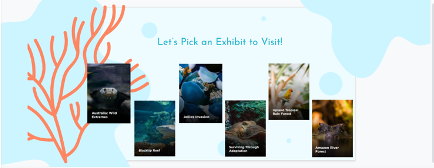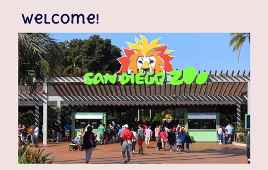Virtual Field Trips in Science Methods

In my undergraduate class, Methods of Teaching Science, a routine assignment to plan
a field trip for students, quickly turned into something much more once the COVID-19
pandemic hit, and the country shut down. Teachers throughout the country had to get
more creative and think outside of the box to continue to make learning fun and interesting
while educating virtually. Businesses began to feel the same, so they started to make
“virtual visits.” This led to the idea of incorporating a “virtual field trip” into
the college level teacher preparation class.
 Teacher candidates were given an assignment where they had to choose a location and
incorporate the "trip" into their teaching. They based a lesson around a Next Generation Science Standard while incorporating the “trip” and then presented it to their classmates. Some of
the places we "visited" were the National Aquarium in Baltimore, Museum of Natural History, Air and Space Museum, San Diego Zoo, and even the volcanoes in Hawaii! The teacher candidates were able to experience planning a field trip and then turning
it into a virtual one. This not only is a great strategy to use during the pandemic,
when no one was able to take field trips, but also to use to enhance everyday instruction.
Teacher candidates were given an assignment where they had to choose a location and
incorporate the "trip" into their teaching. They based a lesson around a Next Generation Science Standard while incorporating the “trip” and then presented it to their classmates. Some of
the places we "visited" were the National Aquarium in Baltimore, Museum of Natural History, Air and Space Museum, San Diego Zoo, and even the volcanoes in Hawaii! The teacher candidates were able to experience planning a field trip and then turning
it into a virtual one. This not only is a great strategy to use during the pandemic,
when no one was able to take field trips, but also to use to enhance everyday instruction.
This assignment was started with the instructor before me, I just reformatted it to fit my course. It was a great way for undergraduate teacher candidates to learn how to use technology to make their instruction engaging and fun, all while tying the real world to learning in an authentic manner.
The assignment shared a variety of ways to add in a “virtual” component. Some teacher candidates used webcams that the locations set up while others incorporated videos that toured different facilities and locations. How the virtual visit was presented to students depended on the lesson, activity, location, etc. Some teacher candidates had their “students” taking a self-guided tour through websites while others would “present” to them on a screen in the front of the room, or possibly a “zoom” style guest speaker with someone at the specific location.
Overall, the teacher candidates found this assignment to be challenging, however, very beneficial. They were introduced to another strategy to add to their teaching “toolbox.”
What activities will be offered during a virtual field trip? Would there be a narrator explaining what the user sees or will it just be a visual experience?
This would depend on the location and/or purpose. I had a student who took us to the San Diego Zoo to see animals in their habitats. She shared the webcams from a variety of animal locations throughout the zoo. This student was also thinking ahead, because live webcams show what is happening right then (sometimes the animals are not cooperating) so she had placed videos that the zoo had saved and placed on their websites as backups within her lesson. This way she was sure that her students would be able to see what was needed for learning to occur. Another student took us to the Air and Space Museum. During her lesson, she shared a recorded tour of the museum; picking a few areas for the visit; the ones that matched her purpose/lesson outcome.
In completing this assignment, students learned that there are a vast number of resources readily available to them and that these resources could enhance their lessons. These virtual field trips took us to locations that we otherwise wouldn’t have been able to visit. They learned that adding in this real-world component made their lessons come to life and be more interesting and fun. Some takeaways…they didn’t have to use everything they found about a particular location or everything that that location offered. Some locations have made materials for teachers to use with students virtually, and while these are extremely helpful, they weren’t necessarily needed; especially if the objective/outcome my students were working towards didn’t match that of the lesson/activity the location created.
How did this assignment help enhance everyday instruction?
My students quickly learned that they could enhance many of their lessons with what they learned from this assignment. They could use these “field trips”, or parts of them, for a variety of purposes; at the beginning of their lessons to get the students excited and engaged in a certain topic, during their instruction to bring the topic to life, and even at the end as a way to enhance or extend the students learning and take it to another level.
Which location was the students’ favorite place to plan and visit?
Good question. I'm not sure, but if I had to pick one, I would say riding the roller coaster at Disney World and then discussing the physics behind roller coasters.
Any future plans with this assignment?
I do plan on using this assignment again this semester. I feel this assignment is beneficial and an activity that they will remember and want to take into their own classrooms one day. One day we may test-pilot these with students. Originally, last semester, we were going to use them with our field experience class of students; however, it didn’t play out (COVID interfered). Maybe one day!